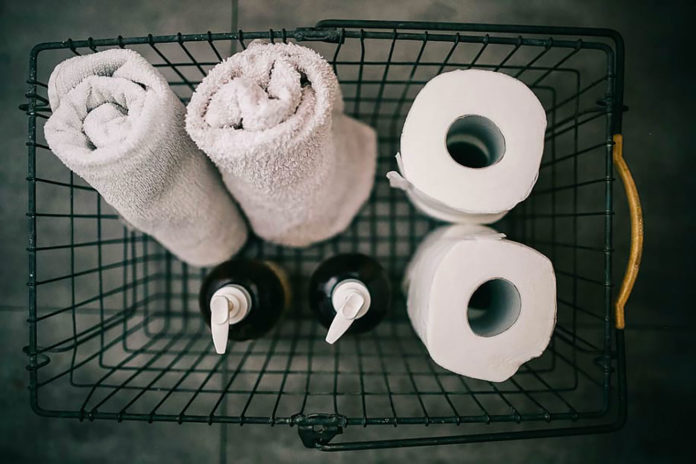As the world is set for recession, this is shaping up to be a banner year for consumer tissue producers. Bathroom product sales tripled, mills on full capacity, extra shifts for converting, store prices jumped 8.6%, but AfH to take a major hit in months ahead. What does the Covid-19 pandemic mean for the global tissue business? Report by Fastmarkets RISI’s Esko Uutela, principal, tissue.

There is only one really hot topic discussed everywhere in the world: the Covid-19 pandemic and its consequences on daily life, freedom to move, employment, operations and liquidity of companies, and the global economy as a whole – which is undoubtedly entering a recession, although it is difficult to estimate how deep the downturn will be. In the following, I will discuss in a bit more detail what has happened and what we might expect in the coming months in the global tissue business. Covid-19 will have distinctly different consequences on the consumer and AfH tissue sectors. But to start, let’s focus on China, where the virus was found, and the Asia Pacific region as a whole, before continuing to Western Europe and North America, the latecomers to the coronavirus scene.
At first, many mills in China were forced to close, including all mills in Hubei Province. This took place as an extension of the Chinese New Year holidays, which started around January 25, or even slightly earlier with downtime taken at mills. Hubei Province is not a major hub of Chinese tissue production, accounting for less than 5% of Chinese tissue capacity, although some of the largest players, such as APP, Vinda Paper, C&S Paper and the Shanghai Taison Group, have mills there. But the closure of mills in Hubei disrupted the supply chains just as consumers rushed to purchase toilet paper. In response, Vinda Paper reopened an older PM at its oldest mill in Guangdong that had been closed in mid-2019 to replace part of the lost production in Hubei.
Elsewhere in the Asia Pacific region, the developments in China caused worry in areas that source a major part of their tissue supply from China. People started panic buying toilet paper there as well. Violence erupted, with customers fighting for the last pack of toilet paper.
In Australia, the largest retailer, Woolworths, began to restrict how many packs of tissue a single customer was allowed to purchase. The other leading retailers in Australia, Coles, Aldi and Costco, soon followed Woolworths in rationing toilet paper purchases. And in Hong Kong, a lorry loaded with toilet paper was hijacked—a situation that would have been difficult to imagine just a few months ago. Is toilet paper a strategic asset?
In Asia, thanks to radical restrictive measures, China, South Korea and Singapore have been able to stop the massive spreading of the infection, although not totally stopping the pandemic. In China, with the number of new cases falling sharply in March, local authorities began to allow businesses to reopen from March 10 on the condition that sufficient protective measures against the virus, including masks for personnel, were in place. The pulp and paper industry has gradually recovered from the prolonged stoppage.
In Hubei, roadblocks have been removed, allowing trucks and cars through, and in late March travel restrictions on Hubei residents, excluding Wuhan, were lifted. For the capital city, and elsewhere in China, people are allowed to enter but not to leave until 8 April. On 14 March, C&S Paper restarted its 140,000 tonne per year tissue paper mill in Xiaogan, a major tissue production hub.
Top producers APP China and Vinda International have also recommenced production at their tissue paper mills in Xiaogan, which have capacities of 240,000 tonnes per year and 300,000 tonnes per year, respectively. But Shandong Chenming’s mill in Wuhan, including one 60,000tpy tissue PM, remains shut without a set date for reopening.
China is the world largest exporter of tissue. One might expect that tissue exports suffering substantially from the increased domestic buying and mill closures. But export statistics for January-February 2020 show only a minor decline of about 5,000 tonnes (3.7%) in exports compared to the same period last year. This was a major surprise to me and certainly for many others as well.
Another issue is the influence of ongoing expansion projects in China. In early January, there were announcements about new local PM start-ups, but as is normal, during the Chinese New Year holiday there no new PMs started up. In February, there were practically no announcements of new capacity, and only in March they started to come again. Projects with Western equipment will likely be harder hit than for projects with deliveries by domestic machinery manufacturers.
On our project list, Andritz has four large PMs, two for Oji Nepia and two for the Shanghai Taison Group, Valmet two PMs for APP, and the PMP Group at least six PMs for APP and a couple more for the Hebei Yusen Group. All these suppliers have subsidiaries in China, but the start-up team normally also includes leading technical experts from the home countries. We expect that several of these projects, if not all of them, will be delayed by at least a couple of months because of the coronavirus.
As the virus spread to other regions, so did the panic buying and hoarding of tissue. Retailers in North America and Europe also found it necessary to limit the amount of tissue purchased per customer to keep the shelves in their tissue aisles stocked. This was certainly not bad news for tissue mills, which ultimately mobilised all their reserve capacities to respond to the sudden demand peak. Consumer tissue mills in North America and Europe have been running at their capacity limits for the past couple of weeks.
In Germany, three trucks that belong to a famous tissue supplier with one of the country’s oldest brands were hijacked by people desperate for toilet paper. Sales of toilet tissue exploded; in Germany, for example, toilet paper purchases were more than three times the normal level in calendar week 12 (16-22 March), the third week in a row of above average sales. Mills reported full capacity utilisation and extra shifts for converting were organised, and the demand for additional parent roll purchases picked sharply up.
In North America, the influence of the Covid-19 pandemic started slightly later, so the effects on the tissue business in February were moderate. But in early March, everything changed. Retailers from Walmart to smaller stores saw their tissue aisles empty of toilet paper, online sellers, who are now accounting for about 11% of US tissue sales, led by Amazon, were rapidly wiped out, leaving their web sites with comments like “article available soon.”
Tissue mills have responded and are working at their capacity limits. We expect that capacity utilisation in March was very high at an estimated 98-99%. Reports from mills from New Jersey to Oregon and converters support this expectation (see the March issue of the US Tissue Monthly Data for more details).
For example, in Wisconsin, Georgia-Pacific (GP) saw orders for toilet paper and paper towels double, while demand for products at airports, hotels and other public venues softened, according to a local report. GP said its mills and distribution centres operated at 120% of capacity. Our North American news team reported last week that in terms of the surge-buying of toilet paper nationwide, one report, citing Nielsen data, showed toilet paper sales rose 60% in the week ending 7 March, and rising retail prices on store shelves as well.
Continue reading, Pandemic Special part 3, USA TISSUE IN COVID-19 ENVIRONMENT: TEMPORARY UPTAKE IN RETAIL, TROUBLES IN AFH SECTOR

































